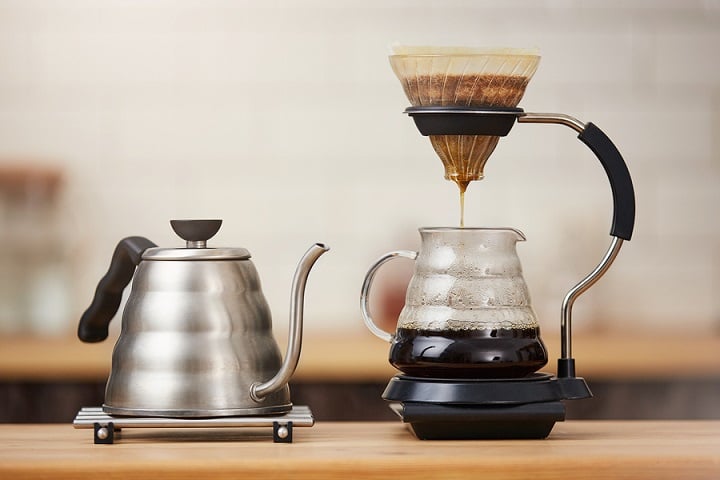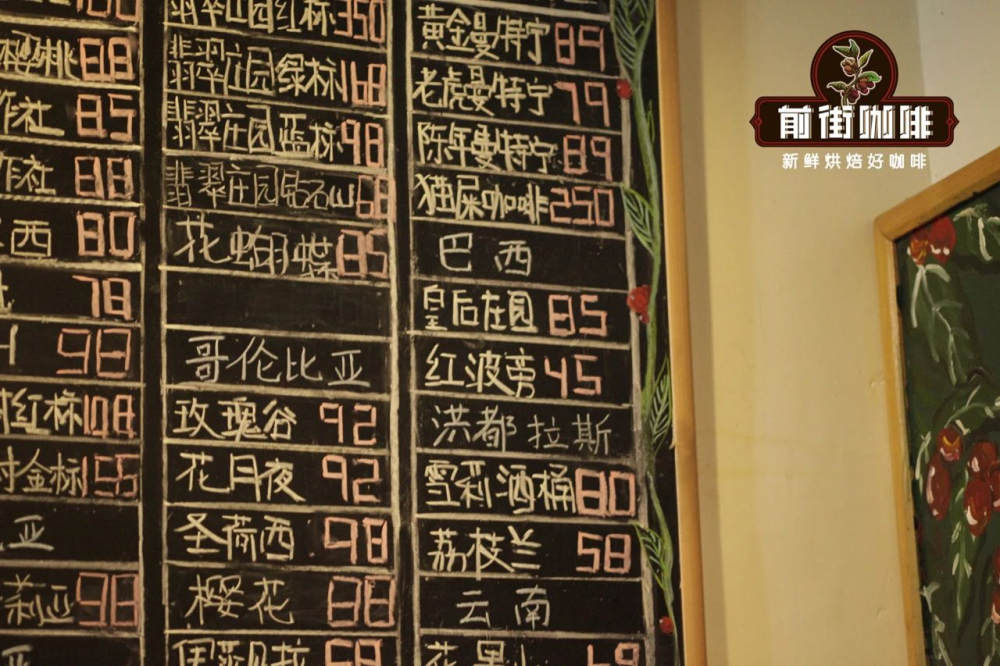Flavor and characteristics of Ethiopian Coffee produced in Ethiopia

Professional coffee knowledge exchange more coffee bean information please follow the coffee workshop (Wechat official account cafe_style)
According to the above four different modes of production, Ethiopian coffee can be divided into nine major coffee producing areas, including five boutique coffee areas: Sidamo, Yegashefi, Harald, Lim and Lekampu. and four general commercial bean producing areas: Gemma, Irugbo, Tibby and Bekaa. The sun or water washing methods are used in each district, and different treatment methods also affect the flavor. Egypt traditionally uses the ancient sun treatment, but since the introduction of water washing technology in 1972, it has gradually increased the ratio of water washed beans for more than 30 years. At present, the sun method accounts for about 80%, and water washing accounts for about ⒛%.
Sidamo and Yejia Xuefei are mainly washed with mouth drying as a supplement, while Lim and Tiebi producing areas are mainly washed with water. Sun-dried beans are mainly Harald, Gemma, Lekampudi and Yilu Gbagbo. Sidamo: 1400 meters above sea level, 2200 meters above sea level, is a famous boutique coffee area in southern Egypt, bordering Kenya, with two kinds of washing and sun exposure. The washed sidamole is light green and the beans are small and oval. The palate has citrus aromas with a hint of raspberries, as well as pleasant elegant sweet and sour flavors, sweet grapes and a chocolate finish.
Yejasuefei is a small town with an elevation of 1200m and 2100m above sea level. It is also synonymous with Ethiopian boutique beans. It has been a wetland since ancient times, and the ancient saying "Yejia" means "settle down", and "Xuefei" means "wetland", so "Yejiaxuefei" means "let us settle down in this wetland". Strictly speaking, Yega Xuefei is a by-product area of Sidamo. Located in the northwest of Sidamo, with mountains and lakes, the town is one of the highest coffee-producing areas in Egypt. However, the mode of production and flavor here are so outstanding that Egyptian coffee farmers compete to be proud of the flavor of their coffee, so they are independent from Sidamo and become the most famous producing area in Africa. The so-called "Yega Chuefei" refers to strong aromas of jasmine, lemon or green citric acid, as well as sweet peaches, almonds and tea.
Harald producing area of Ethiopian coffee
At an altitude of 1600m, the Harald Heights in eastern Egypt is one of the highest elevation areas for human coffee cultivation (some even claim to be as high as 2000,000m), overlooking the Yemeni ports of Moka and Aden across the Gulf of Aden. For centuries, Harald coffee farmers, using camels, donkeys or horse-drawn carriages, risked being besieged by hyenas to the downhill port of Djibouti and shipped them to the Yemeni port of Moka to European countries. Harald's coffee history is much older than Yega Xuefei, and the soil and water, climate, treatment and flavor are also different from Yega Xuefei. Harald is a dry and cool climate, the most suitable for sun treatment, the flavor is similar to the Yemeni mocha across the bay, so Harald is also known as Harald mocha. Harald's beans are mostly long-bodied beans, which are obviously different from the short round beans in the sun. Coffee Lim producing area of Ethiopia
The average planting height in this area is significantly lower than that in other areas, but there is still good coffee of fine quality at an altitude of 1200m above sea level. Lim producing area is located in the southwest of the capital, and Gemma can be reached further south. Both belong to the Kafa Forest, north of Lim and south of Gemma.
Lim is mostly washed with water beans, orange fragrance is strong, sour and lively, the flavor is similar to water washing Yega Xuefei.
Ethiopian coffee producing area
At an altitude of 1400 MULLI 1800 meters above sea level, Lim continued to the south to reach the Gemma producing area. This area is the main body of Kafa forest, specializing in large commercial beans, annual exports of more than 60, 000-80, 000 tons, accounting for 1/3 of Egypt's output, is the largest producing area. Gemma is the capital of the Kafa Forest, to the south to the Gbarnga, the capital of the ancient Kafa Kingdom, which is famous for its wild coffee. During the seven-year summer vacation of ○⊙, the Egyptian authorities announced that natural low-caffeine coffee trees had been planted on a large scale. The low-caffeine varieties that have attracted worldwide attention were found in the Kafa Forest and added a lot of topics to this area.
Other coffee producing areas in Ethiopia
Tiebi and Bebeca: the elevation of Tiebi is 1000 Murray 1900 meters, and the elevation of Bebeca is 900 Murray 1200 meters. Located on the edge of the Kafa forest, these two areas are the lowest coffee-producing areas in Ethiopia, dominated by bulk commercial beans or formula beans. Tiebi also has a lot of wild coffee. Coffee in this area is seldom used as boutique or single bean.
Jinbi and Lekampur: Lim is northwestbound to reach the Jinbi producing area, 1400m above sea level. Mainly to sun-drying beans, known as "the poor's Harald". As the name suggests, the flavor of Kinby or Lekampi is similar to that of Harald, but the price is more reasonable. However, Jinbi's bean body is larger (strong bean body is the most important feature of the northwest producing area), which is very different from the southwest and eastern producing areas, and also has obvious flower fragrance. It is a common sun-dried bean in the American boutique coffee industry.
Yilu Gbagbo: 1300 meters above sea level, 1900 meters above sea level, located southwest of Kinby, is the westernmost coffee-producing area of Ethiopia, bordering Sudan. Yilu Gbagbo's beans are moderately sour and mellow, which are mostly used as formula beans and are often transported to Gemma for mixing treatment, which are not fine beans.
Important Notice :
前街咖啡 FrontStreet Coffee has moved to new addredd:
FrontStreet Coffee Address: 315,Donghua East Road,GuangZhou
Tel:020 38364473
- Prev

Is the flow rate of the filter cup important in the brewing process of hand-brewed coffee?
Professional coffee knowledge exchange more coffee bean information Please follow the coffee workshop (official Wechat account cafe_style) often hear this saying: this filter cup flows faster, so the coffee flushed out tastes more fragrant, while that filter cup flows slowly, so the coffee flushed out tastes partial to the taste. Such a statement seems acceptable to everyone, but the editor always thinks
- Next

Are there any varieties of Arabica coffee that taste good? are they bitter? Why Arabica beans are so popular in the market?
Arabica variety family typica is the most classic high-quality Arabica species, which is the source of many commercial improved varieties at present. However, it has poor disease resistance, easy to catch rust leaf disease, and is one of the oldest native varieties in Ethiopia, with high yields in Hawaii. Its parietal leaf is red and copper, also known as
Related
- Beginners will see the "Coffee pull flower" guide!
- What is the difference between ice blog purified milk and ordinary milk coffee?
- Why is the Philippines the largest producer of crops in Liberia?
- For coffee extraction, should the fine powder be retained?
- How does extracted espresso fill pressed powder? How much strength does it take to press the powder?
- How to make jasmine cold extract coffee? Is the jasmine + latte good?
- Will this little toy really make the coffee taste better? How does Lily Drip affect coffee extraction?
- Will the action of slapping the filter cup also affect coffee extraction?
- What's the difference between powder-to-water ratio and powder-to-liquid ratio?
- What is the Ethiopian local species? What does it have to do with Heirloom native species?

